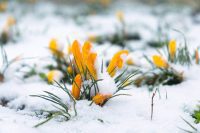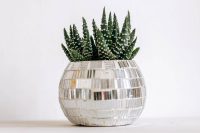At a glance
- Family: Droseraceae
- Botanical name: Drosera spatulata
- Common names: Spoon-leaf sundew, sundew, rosy sundew, common sundew
- Plant type: Rhizomatous herb
- Flower colour: White, pale pink
- Bloom time: Late winter, early spring
- Sun exposure: Bright, indirect light to part shade
- Humidity: 50-75%
- Soil pH: Moderately acidic 5.5 to 6.5
- Mature height: 2 cm
- Flower size: 2.5 cm
- Soil type: Sandy, boggy heath
- Habitat: Bushland, sandstone heathland
- Difficulty level: Easy
| Botanical name meaning
Jacques-Julien Labillardière gave the spoon-leaf sundew its botanical name in 1804 from a plant collected in Tasmania.
|
What is a spoon-leaf sundew?
Also known as rosy sundew, spoon-leaf sundew (Drosera spatulata) is an insectivorous species of plant belonging to the family Droseraceae, one of the largest genera of carnivorous plants containing over 90 species. Its distribution ranges from Southeast Asia, southern China, Japan, Micronesia, Papua New Guinea, eastern Australia, and New Zealand.
The spatula-shaped leaves of spoon-leaf sundew grow in a characteristic low-growing rosette formation, hence the term rosetted sundew. Glandular trichomes are present on the upper surface of the leaf and produce a mucopolysaccharide droplet to attract and trap insects and sessile glands that secrete enzymes to break down and digest their prey. When the insect lands on a leaf, the tentacles respond to the touch by bending inwards trapping the prey, in a process known as thigmonasty. Insects serve as a secondary food source to the nutrient-poor soil the spoon-leaf sundew grows.
Leaf colour can range from green to red depending on the amount of sunlight the plants get. White or pale pink self-pollinating flowers up to 6 mm across develop on a long spike from spring to winter, followed by small, black fruit that contains seeds.

Habitat
Spoon-leaf sundew is commonly found growing in bright, indirect light to part shade in open boggy heath, with acidic, sandy soi
Plants will lose their leaves during dry or overly cold periods. I have witnessed large numbers of spoon-leaf sundews locally that completely vanish during the warmer months. The rhizome remains underground in a dormant state until favourable conditions return.
Care
As long as the plant’s basic needs are met, spoon-leaf sundew is an easy and interesting plant for the green thumb. Spoon-leaf sundews grow naturally in nutrient-poor soil. A succulent mix or sphagnum moss is the preferred growing medium.
Spoon-leaf sundews grow in full sun to part shade and require frequent watering to keep the soil moist at all times. It can help to sit the pot in a saucer with water to keep moisture levels and humidity up. Only use distilled water or rainwater that is low in salts and minerals.
Can be grown outside year-round in tropical climates, but should be brought indoors in areas prone to frost.
Propagation
Spoon-leaf sundew is readily propagated from seed which should be sown in early to mid-spring as the days become longer and temperatures warm.
Frequently asked questions
How big do spoon-leaf sundews get?
Spoon-leaf sundew grows to a width of 2.5 – 5 cm
Are sundews toxic to humans and pets?
Sundews are non-toxic to humans and pets.
Where can I buy a spoon-leaf sundew?
Specialist nurseries often sell sundews, especially during the winter months. Native plants are protected, and should not be removed from the wild.
Julia is a writer and landscape consultant from Wollongong with a love of horticulture. She had been an avid gardener for over 30 years, collects rare variegated plants and is a home orchardist. Julia is passionate about learning and sharing her knowledge of plant propagation and plant toxicology. Whether it’s giving advice on landscape projects or sharing tips on growing, Julia enjoys helping people make their gardens flourish.




